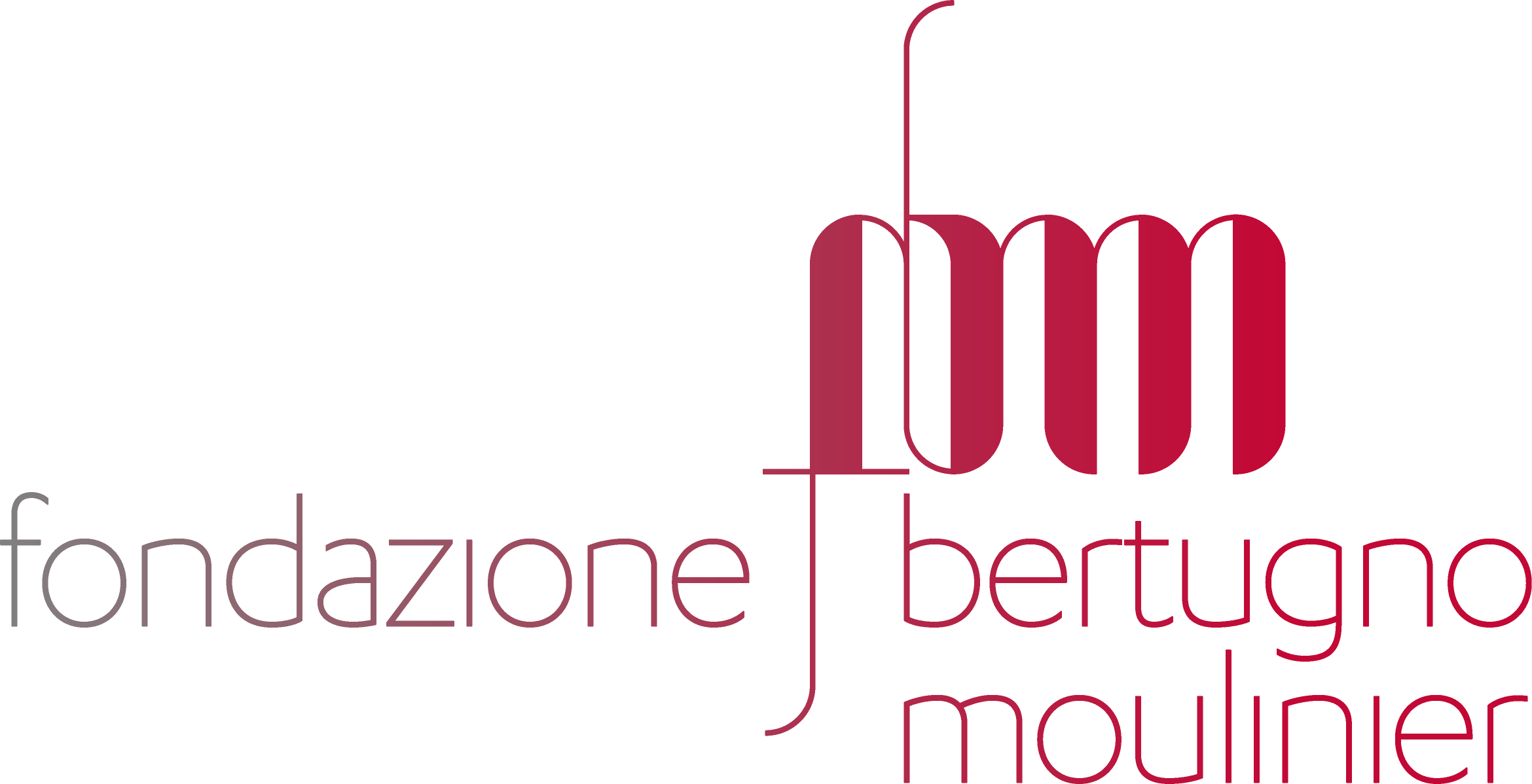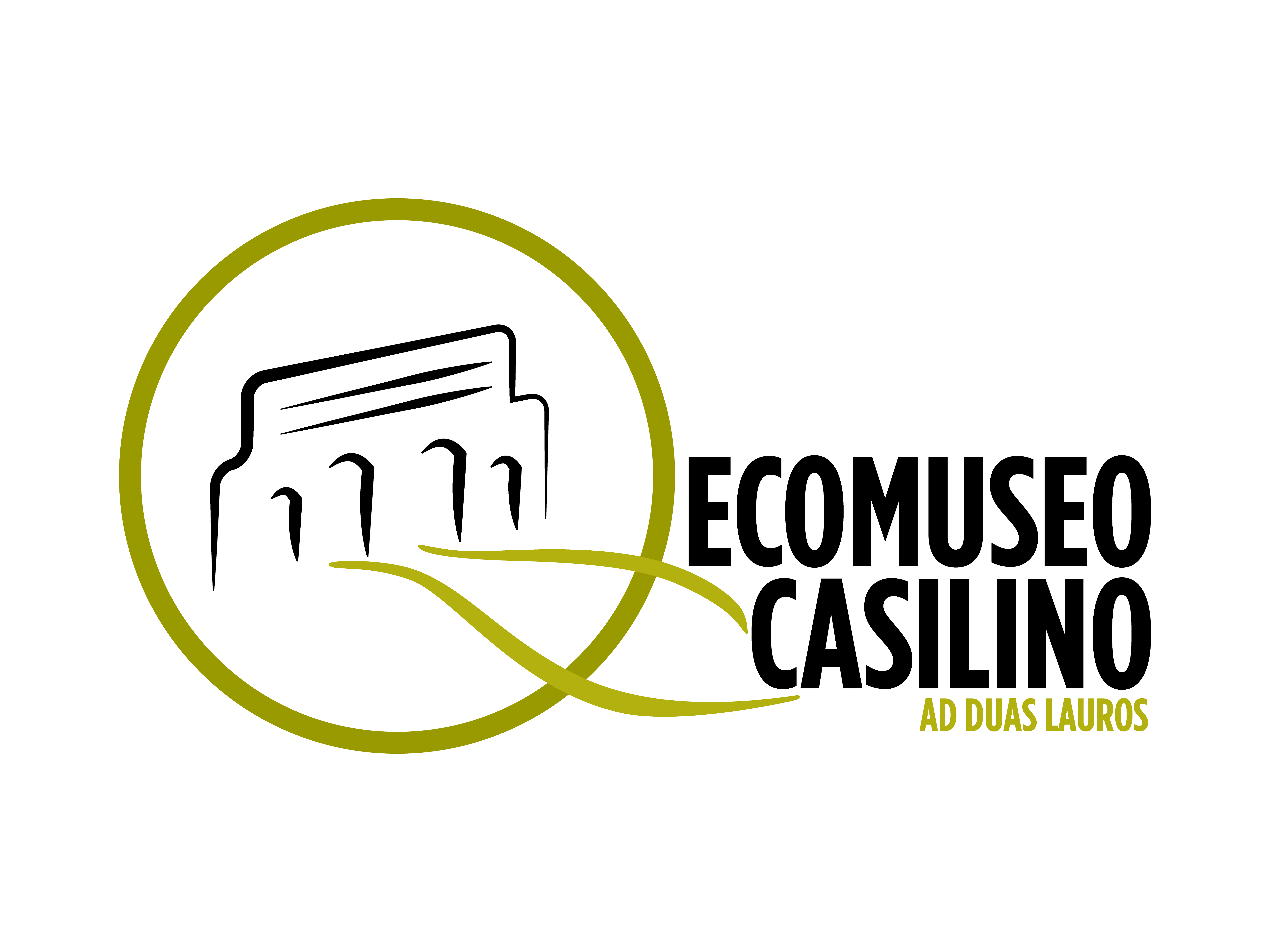![]()
BLOG | 2023

BLOG | 2023
download the program

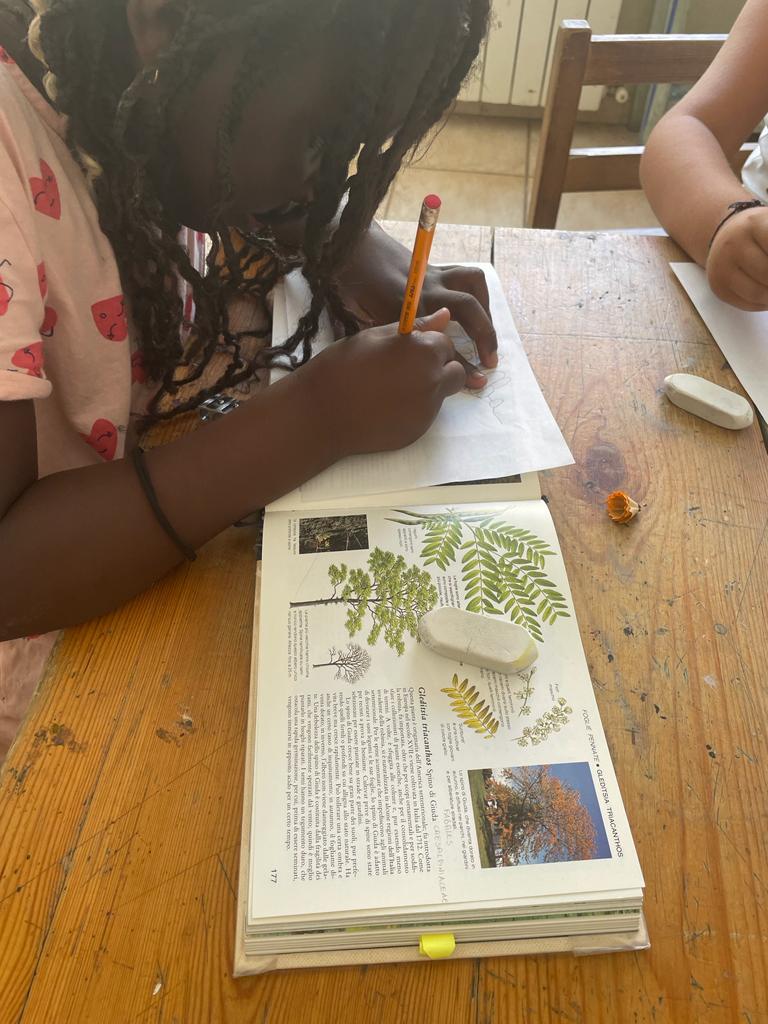

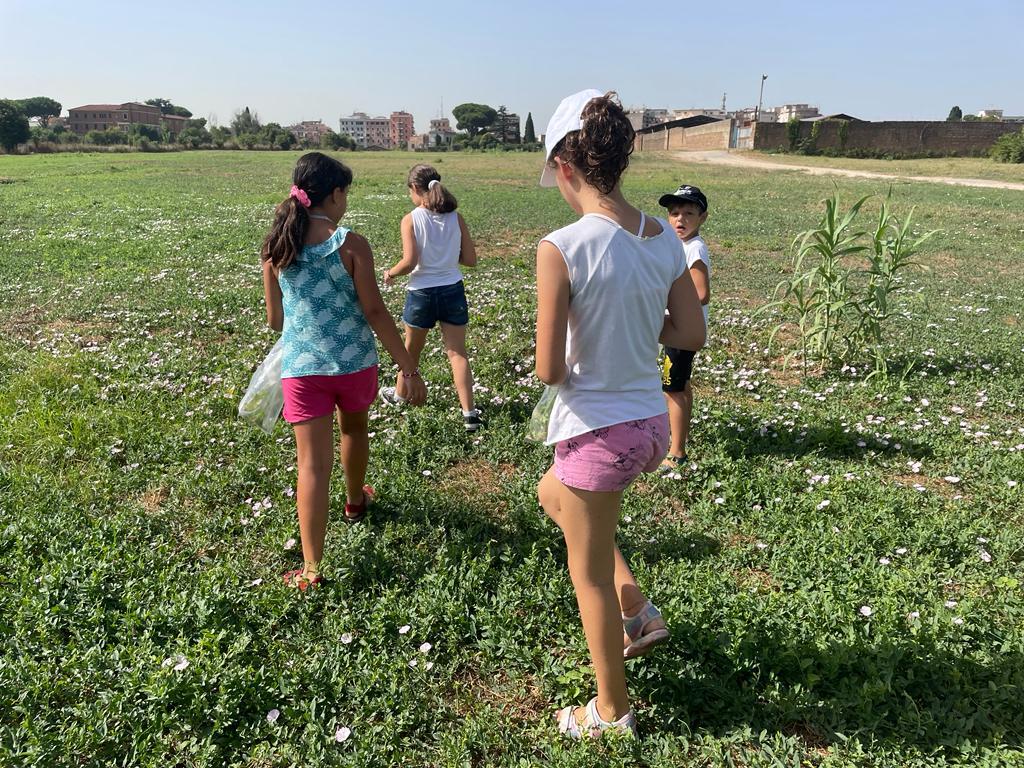
L’Erbario del selvatico urbano
Nell'ambito del progetto PLATEIA, il nostro partner, l’Ecomuseo Casilino, intende interrogare Largo Perestrello alla luce della sua relazione con il contesto territoriale, la storia del luogo e la storia del territorio. Attraverso il recupero della memoria selvatica della piazza e del selvatico urbano che si è impadronito e di ogni spazio in cui la natura riesce ad avere la meglio sul costruito, si vuole definire una narrazione ed un immaginario che sottende la storia.
L'Erbario del selvatico urbano, un percorso laboratoriale di quartiere, a cura di Ecomuseo Casilino :
“Nei giorni scorsi, il 23 e 24 luglio, accompagnati da Rossella Mortellaro, abbiamo completato un laboratorio di botanica con i bambini e le bambine della Casa delle Arti e del Gioco gestito dal CEMEA del Mezzogiorno.Realizzato per Plateia, l'attività è propedeutica ad avviare un processo di reframe di una piazza del quartiere.
Con i bambini e le bambine abbiamo attraversato il quartiere di Tor Pignattara (versante Marranella), sulla orme dei grandi botanici del passato che proprio qui avevano raccolto diverse specie. La raccolta è stata fruttuosa ed estremamente interessante, tanto che abbiamo deciso di realizzare un erbario del quartiere, il primo (se non andiamo errati) che sia mai stato realizzato.
Dopo aver campionato decine di specie, le abbiamo puntualmente schedate e proceduto alla loro essiccazione e tra qualche settimana le prime schede saranno pronte e comporranno una mostra che allestiremo a settembre.
Dal confronto con operatori e bambin* è emerso chiaramente che questo paesaggio (troppo spesso e frettolosamente confuso con il degrado) ci sembra un ottimo strumento
Nell'ambito del progetto PLATEIA, il nostro partner, l’Ecomuseo Casilino, intende interrogare Largo Perestrello alla luce della sua relazione con il contesto territoriale, la storia del luogo e la storia del territorio. Attraverso il recupero della memoria selvatica della piazza e del selvatico urbano che si è impadronito e di ogni spazio in cui la natura riesce ad avere la meglio sul costruito, si vuole definire una narrazione ed un immaginario che sottende la storia.
L'Erbario del selvatico urbano, un percorso laboratoriale di quartiere, a cura di Ecomuseo Casilino :
“Nei giorni scorsi, il 23 e 24 luglio, accompagnati da Rossella Mortellaro, abbiamo completato un laboratorio di botanica con i bambini e le bambine della Casa delle Arti e del Gioco gestito dal CEMEA del Mezzogiorno.Realizzato per Plateia, l'attività è propedeutica ad avviare un processo di reframe di una piazza del quartiere.
Con i bambini e le bambine abbiamo attraversato il quartiere di Tor Pignattara (versante Marranella), sulla orme dei grandi botanici del passato che proprio qui avevano raccolto diverse specie. La raccolta è stata fruttuosa ed estremamente interessante, tanto che abbiamo deciso di realizzare un erbario del quartiere, il primo (se non andiamo errati) che sia mai stato realizzato.
Dopo aver campionato decine di specie, le abbiamo puntualmente schedate e proceduto alla loro essiccazione e tra qualche settimana le prime schede saranno pronte e comporranno una mostra che allestiremo a settembre.
Dal confronto con operatori e bambin* è emerso chiaramente che questo paesaggio (troppo spesso e frettolosamente confuso con il degrado) ci sembra un ottimo strumento
interpretativo del territorio. Crediamo che questo quartiere condivida tanto con il selvatico, tanto da poter vedere in quest’ultimo una cifra interpretativa dell'identità di Tor Pignattara: sa resistere, sa adattarsi, sa essere antifrag
ile, sa accogliere, sa trovare equilibrio nella complessità, sa rigenerarsi. E ovviamente... è difficilmente controllabile.
Chissà se seguendo questa piccola intuizione non si possa trovare la chiave di volta per una “riscrittura” dello spazio pubblico di questo territorio ?
Staremo a vedere. La ricerca è appena iniziata! ”
Chissà se seguendo questa piccola intuizione non si possa trovare la chiave di volta per una “riscrittura” dello spazio pubblico di questo territorio ?
Staremo a vedere. La ricerca è appena iniziata! ”
Plateia | Largo Perestrello
The Fondazione Bertugno-Moulinier introduce PLATEIA, winner project of the “New European Bauhaus Call for Proposals for Co-Creation of public space through citizen engagement” dedicated to civic participation.
Putting together formal and informal communities to regenerate a public square, Largo Perestrello, in the Roman suburbs, in the heart of Tor Pignattara/ Marranella, regaining sense of community and belonging and reconnecting with nature: this is PLATEIA - Community for urban green regeneration, a project promoted by Fondazione Bertugno-Moulinier, together with Rome V municipality, Orizzontale, Ecomuseo Casilino, Associazione Pisacane 0-99, winner of New European Bauhaus Call for Proposals for Co-Creation of public space through citizen engagement dedicated to civic participation and funded by the European Institute of Innovation and Technology (EIT), an European Union body.
PLATEIA wants to consolidate and complete the social process going on since years and started by the territorial communities of the area, which now will be gathered around working tables to replan the square following the indications and the needs of its own inhabitants, making the green as element of wellness, giving back an agora to the city and to the neighborhood. Largo Perestrello will become a place of exchanges and encounters, a place for children to play, a place of expression and culture, wanted by communities and born from a common project, which will aim to build a self-governance model.
The Fondazione Bertugno-Moulinier introduce PLATEIA, winner project of the “New European Bauhaus Call for Proposals for Co-Creation of public space through citizen engagement” dedicated to civic participation.
Putting together formal and informal communities to regenerate a public square, Largo Perestrello, in the Roman suburbs, in the heart of Tor Pignattara/ Marranella, regaining sense of community and belonging and reconnecting with nature: this is PLATEIA - Community for urban green regeneration, a project promoted by Fondazione Bertugno-Moulinier, together with Rome V municipality, Orizzontale, Ecomuseo Casilino, Associazione Pisacane 0-99, winner of New European Bauhaus Call for Proposals for Co-Creation of public space through citizen engagement dedicated to civic participation and funded by the European Institute of Innovation and Technology (EIT), an European Union body.
PLATEIA wants to consolidate and complete the social process going on since years and started by the territorial communities of the area, which now will be gathered around working tables to replan the square following the indications and the needs of its own inhabitants, making the green as element of wellness, giving back an agora to the city and to the neighborhood. Largo Perestrello will become a place of exchanges and encounters, a place for children to play, a place of expression and culture, wanted by communities and born from a common project, which will aim to build a self-governance model.

Largo Perestrello, the space at the center of PLATEIA, is a 1400 smq area built at the top of an underground car parking, and represents perfectly the complexity of the area and its transformations: born as working-class neighborhood, Tor Pignattara shows a fragmented building structure resulted by spontaneous initiatives, inhabited nowadays, by numerous communities coming from Bangladesh, China, Philippines, Romania, Egypt and Peru. Due to the lack of public spaces, social spaces and services, the locals started to use the “square”, as a place for various cultural activities.
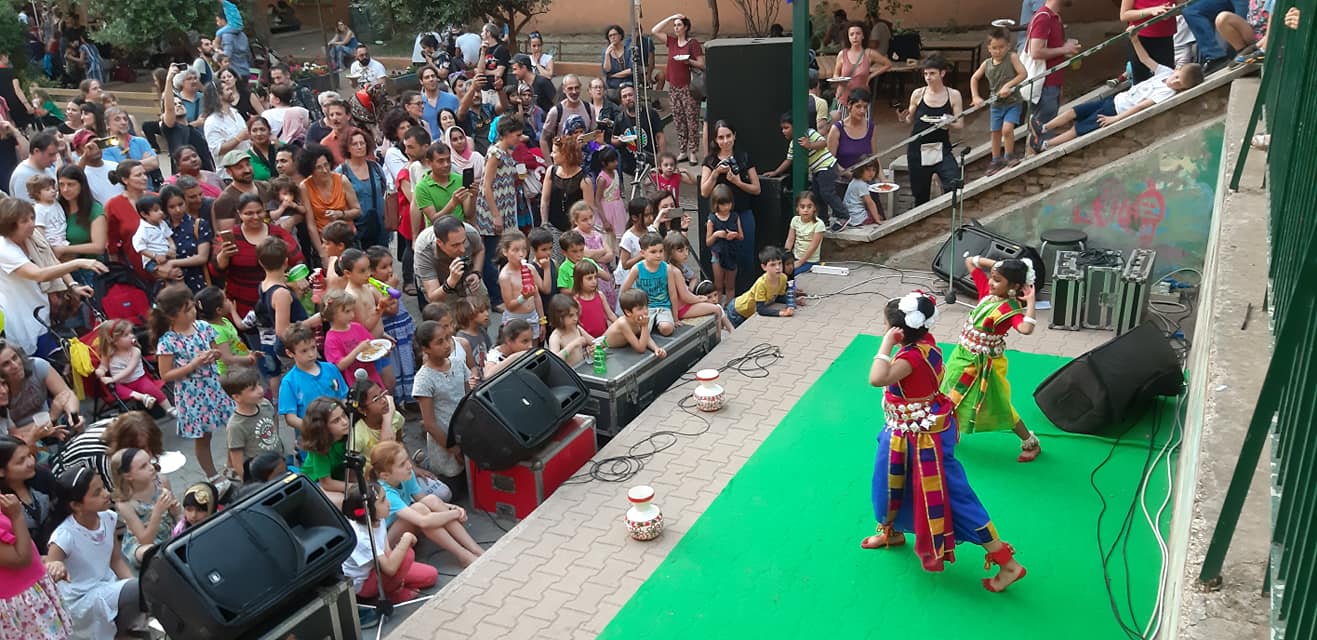
Party at Pisacane school (courtesy associazione Pisacane)


“PLATEIA - Communities for green and urban regeneration” is supported by the European Institute of Innovation and Technology (EIT), a body of the European Union.
PARTNERS
![]()
![]()
![]()
![]()
![]()
![]()
